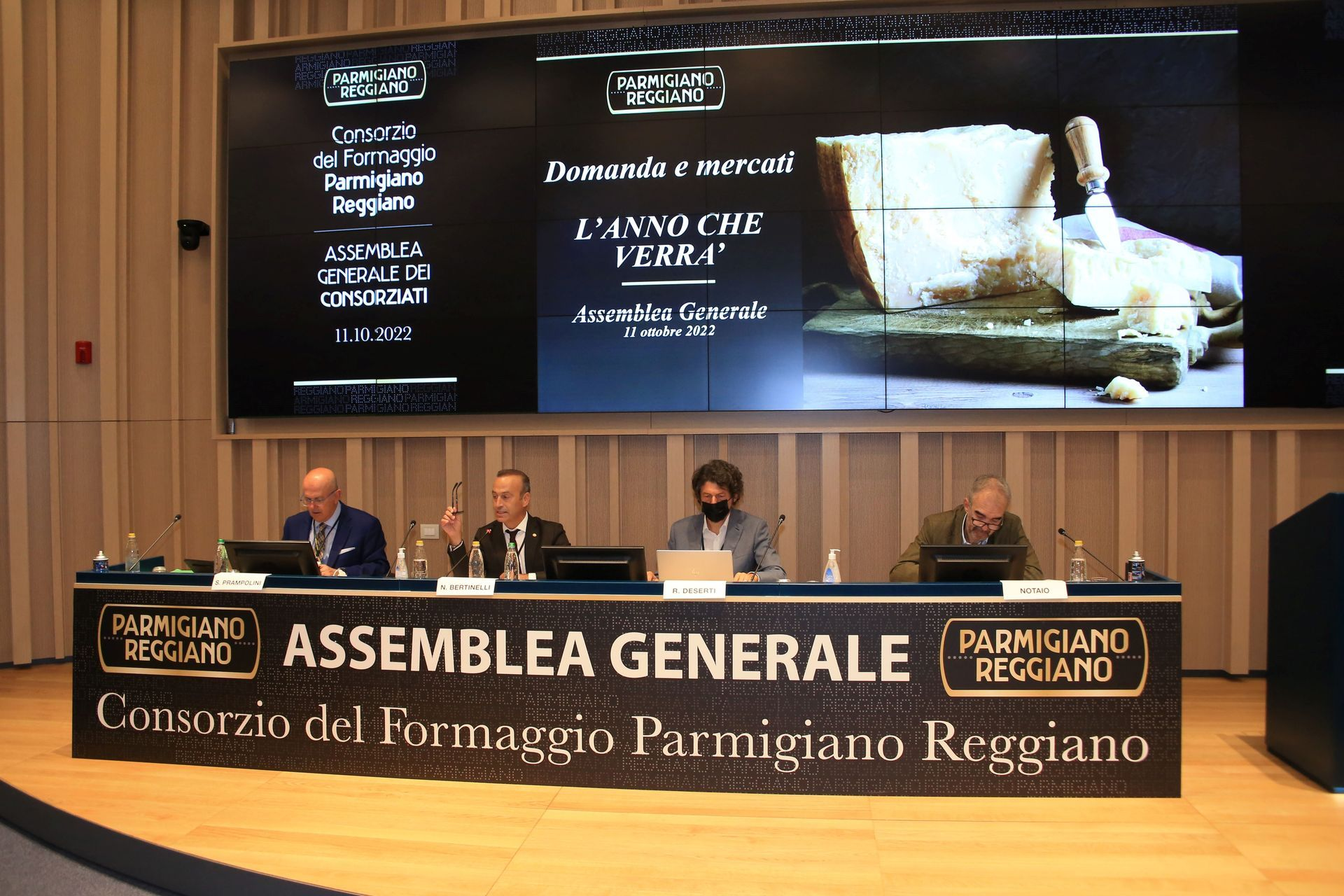
NEWS - 03 maggio 2019
Parmesan has nothing to share with the traceability Of “The King of Cheeses”: Parmigiano Reggiano PDO
Following a decisive ruling by the European Union in regards to its Protected Designation of Origin status, the Parmigiano Reggiano Cheese Consortium strongly combats misusage of the term “parmesan” to describe cheeses which are not the genuine Parmigiano Reggiano. Only cheeses bearing the PDO “Parmigiano Reggiano” to be sold under the denomination “parmesan”
Reggio Emilia, May 2nd 2019 - A cheese maker in the Ukraine sparked controversy this week when the Parmigiano Reggiano Cheese Consortium detected what they feared was counterfeit Parmesan.
As consumers seek ways to determine the authenticity of their food, the Parmigiano Reggiano Cheese Consortium combats misusage of the term ‘parmesan’ to describe cheeses which are not made using artisan and natural methods that are established in the product regulation and in the strict specification for Parmigiano Reggiano PDO.
The Consortium promotes traceability for its distinctive Parmigiano Reggiano, widely recognized as the “King of Cheeses,” in order to guarantee to the consumers they are getting the food they asked for.
Parmigiano Reggiano was recently confirmed as the top-selling PDO product with 1.4 billion turnover at production and 2.4 billion Euros at consumption annually — with 3.6 million wheels produced in 2018.
To bear the designation “Parmigiano Reggiano PDO,” the cheese has to be made respecting strict rules. First of all, it has to be produced in the area of origin (which includes the provinces of Parma, Reggio Emilia, Modena, Mantua to the right of the Po river, and Bologna to the left of the Reno River — a surface of approximately 10,000 km2).
Parmigiano Reggiano is strongly bound to its area of origin such that no other place in the world can produce the same product — even if the same production techniques were used.
Therefore, using ‘parmesan’ to broadly describe non-Italian hard and grated cheeses is not compliant with the production specifications of Parmigiano Reggiano, and is in direct violation of the EU’s Protected Designation of Origin (PDO). In 2008, the European Court of Justice made a decisive ruling that only cheeses bearing the PDO “Parmigiano Reggiano” can be sold under the denomination “parmesan”. This was also a victory for consumers who receive a strong guarantee or traceability, and will be free from misleading denominations on the market. Unfortunately, the same is not true outside of Europe — where consumers can find products labeled as “parmesan” which is not at all Parmigiano Reggiano.
"Our objective shall be to demonstrate that the word ‘parmesan’ is an evocation of the Parmigiano Reggiano designation and that using it for cheeses not compliant with our production specifications violates our Protected Designation of Origin,” stated Nicola Bertinelli, President of the Parmigiano Reggiano Cheese Consortium.
“Parmigiano Reggiano can only be produced in Italy: it is the creation of this land, of the know-how of our people, handed down from generation to generation. Nothing has changed in nine centuries: same ingredients, same care and passion, same area of origin, inseparably tied to the product.”
In 2015, a survey carried out by the Consortium revealed that two thirds of U.S. consumers are deceived by the term “parmesan”: for 66% of U.S. consumers the term "Parmesan" is not generic at all but identifies a hard cheese with precise geographical origin, which, for 90% of the responders, is undoubtedly Italy.
As with the regions where Idaho Potato or the Kauai coffee from Hawaii are grown, there is a specific microbiological characteristic that cannot be found anywhere else in the world except in Parmigiano Reggiano’s Protected Designation of Origin. Only raw milk produced in the area of origin is indeed used to produce Parmigiano Reggiano cheese. It is a special milk, characterized by a unique and intense bacterial activity of the local microbial flora, influenced by environmental factors, especially by the forage, grass and hay from the area that account for the main feed of the cows dedicated to this specific production.
Furthermore, only the cheese master during processing, thanks to the cheese making technique, can enhance and favor the lactic bacteria that operate the positive lactic fermentations that are expected for the success of the cheese making process. It is not just manufactured, but it is made today as it was made nine centuries ago, using those same typical and genuine ingredients.
More about Parmigiano Reggiano: www.parmigianoreggiano.com
Read also




